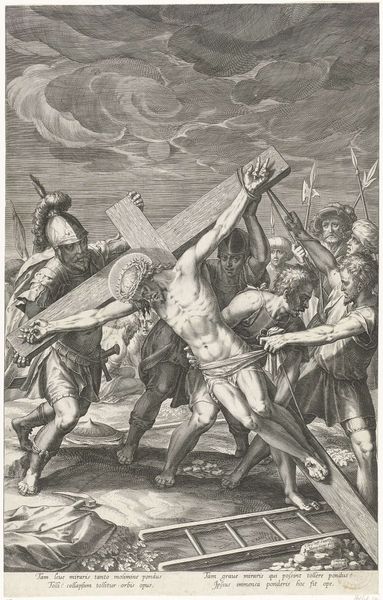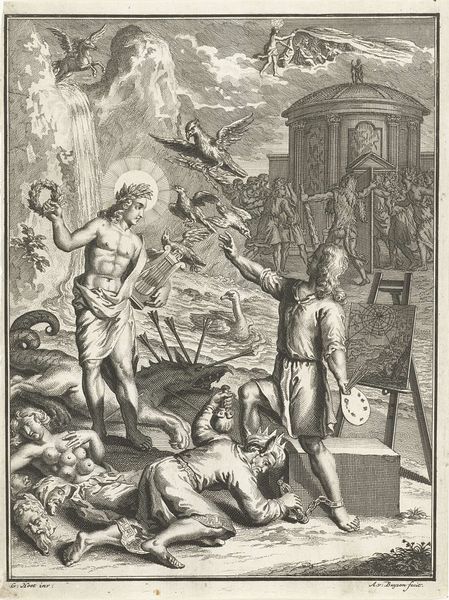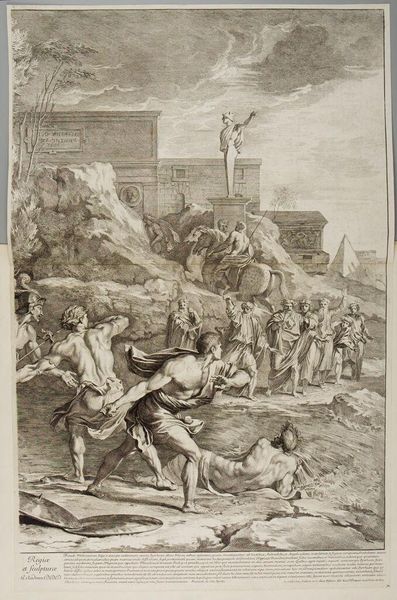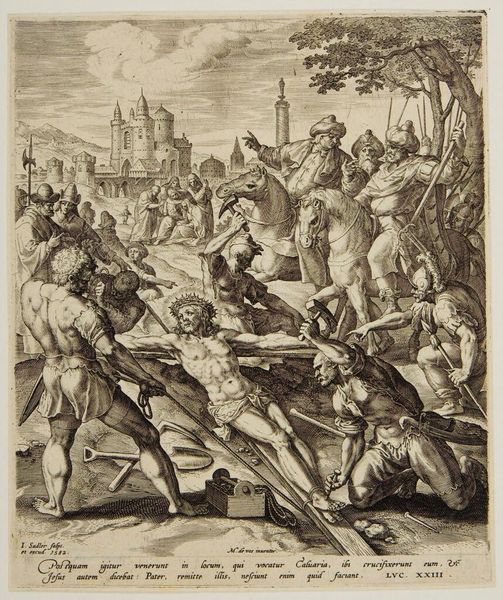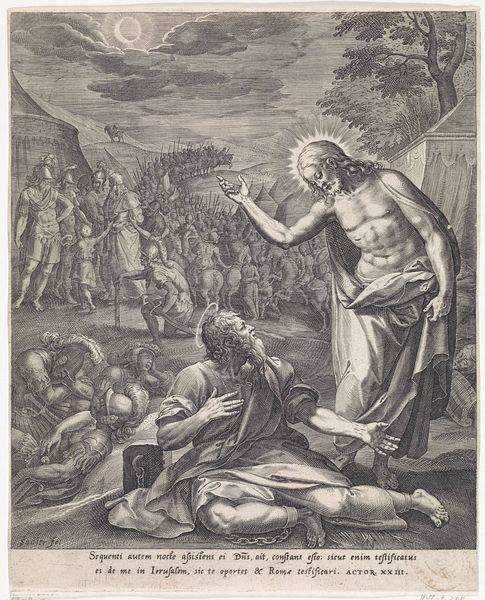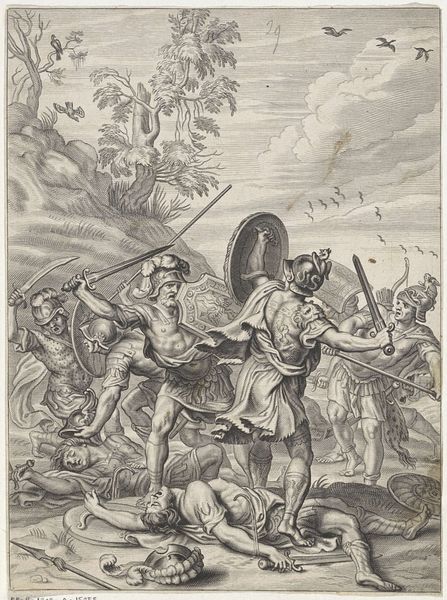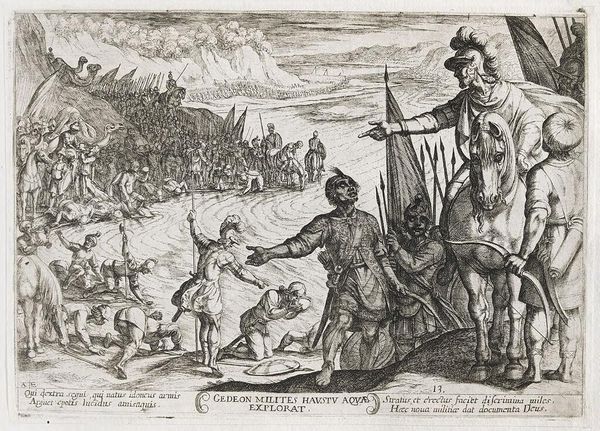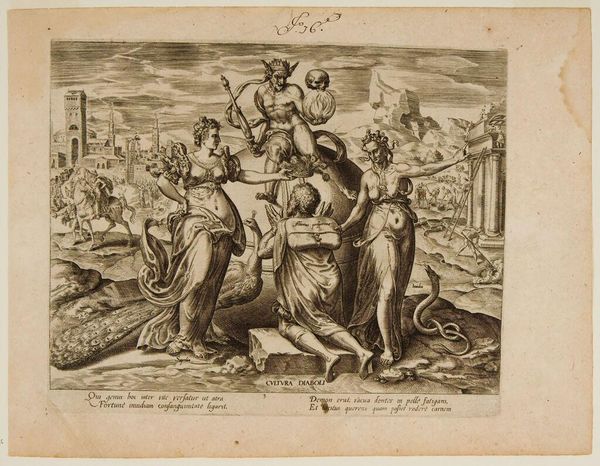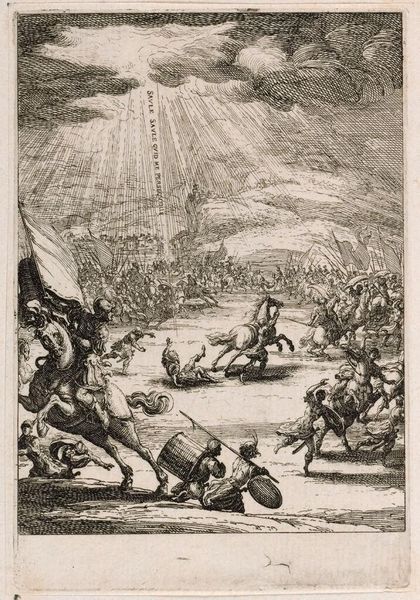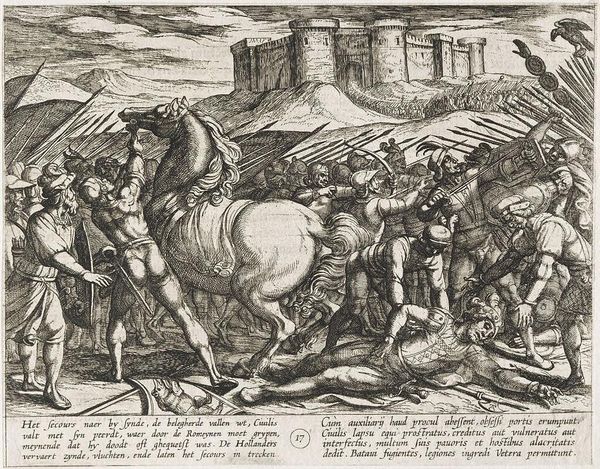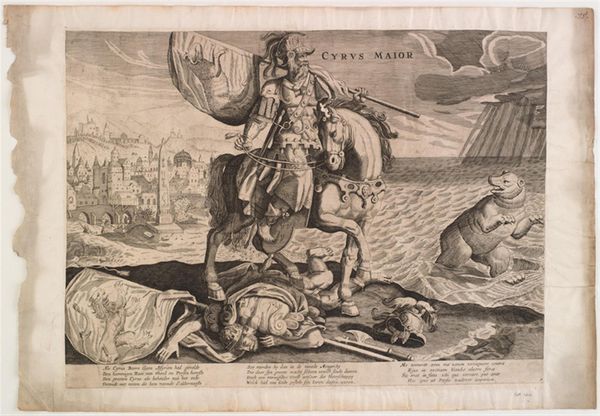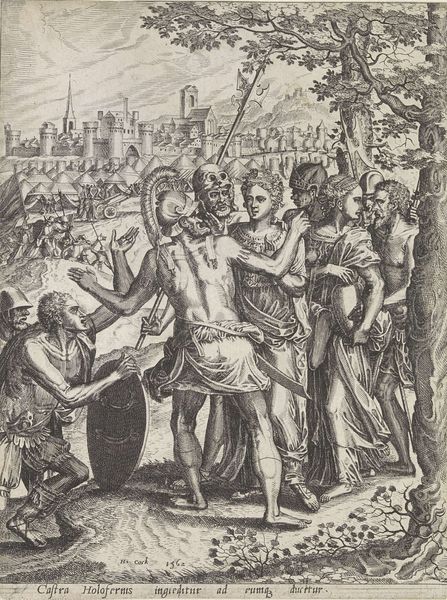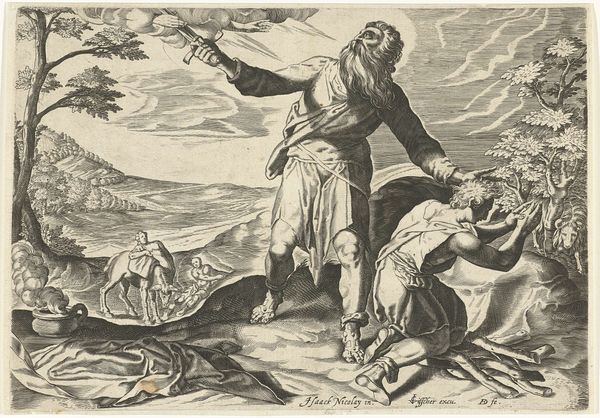
print, engraving
#
allegory
#
baroque
# print
#
landscape
#
figuration
#
cityscape
#
history-painting
#
engraving
Dimensions: width 86 mm, height 146 mm
Copyright: Rijks Museum: Open Domain
Editor: So, this engraving is "Amstel groet de bewoners van Amsterdam," made in 1723 by Jan Goeree. There's a lot happening—nymphs, river gods, the city in the background… It feels like a very staged celebration of Amsterdam. What's your take? Curator: Well, it's crucial to understand the material conditions of this image. It's a print, intended for mass dissemination. These allegories were commonly commissioned by the city government. I see it less as simple celebration and more as manufactured consent. Editor: Manufactured consent? What do you mean? Curator: Consider the cost of the copper plate, the engraver’s labor, and the intended audience. This wasn’t meant for the elite, but rather to circulate amongst the burgeoning merchant class and instill civic pride, even propaganda, by visually connecting prosperity to Amsterdam. Editor: That's fascinating. The way the artist used these mythological figures... is that connected to your interpretation? Curator: Absolutely. These are all signifiers. The river god Amstel represents Amsterdam's lifeblood: trade and resources. The nymphs are commodities being exchanged. Even the specific engraver, Goeree, reflects the labor practices and market for printed images in Amsterdam at the time. How would it change your thinking if this exact design was used by various engravers who paid for the design? Editor: It puts a different light on it. The value isn't in the artist's expression alone but in the entire system of production and circulation. This was meant to shape public opinion. I’m viewing it now less as art and more like a political tool that has aesthetic and historic dimensions. Curator: Precisely! We have to always ask "who is producing, for whom and with what means?" It moves the artistic assessment away from inherent creative insight and makes it, at the very least partially, a result of material circumstances. Editor: I appreciate your thoughts. Seeing it through a materialist lens is quite revealing! Curator: And considering how things are made shifts your attention to thinking about distribution as something intentionally fabricated. Thank you for your engagement!
Comments
No comments
Be the first to comment and join the conversation on the ultimate creative platform.
